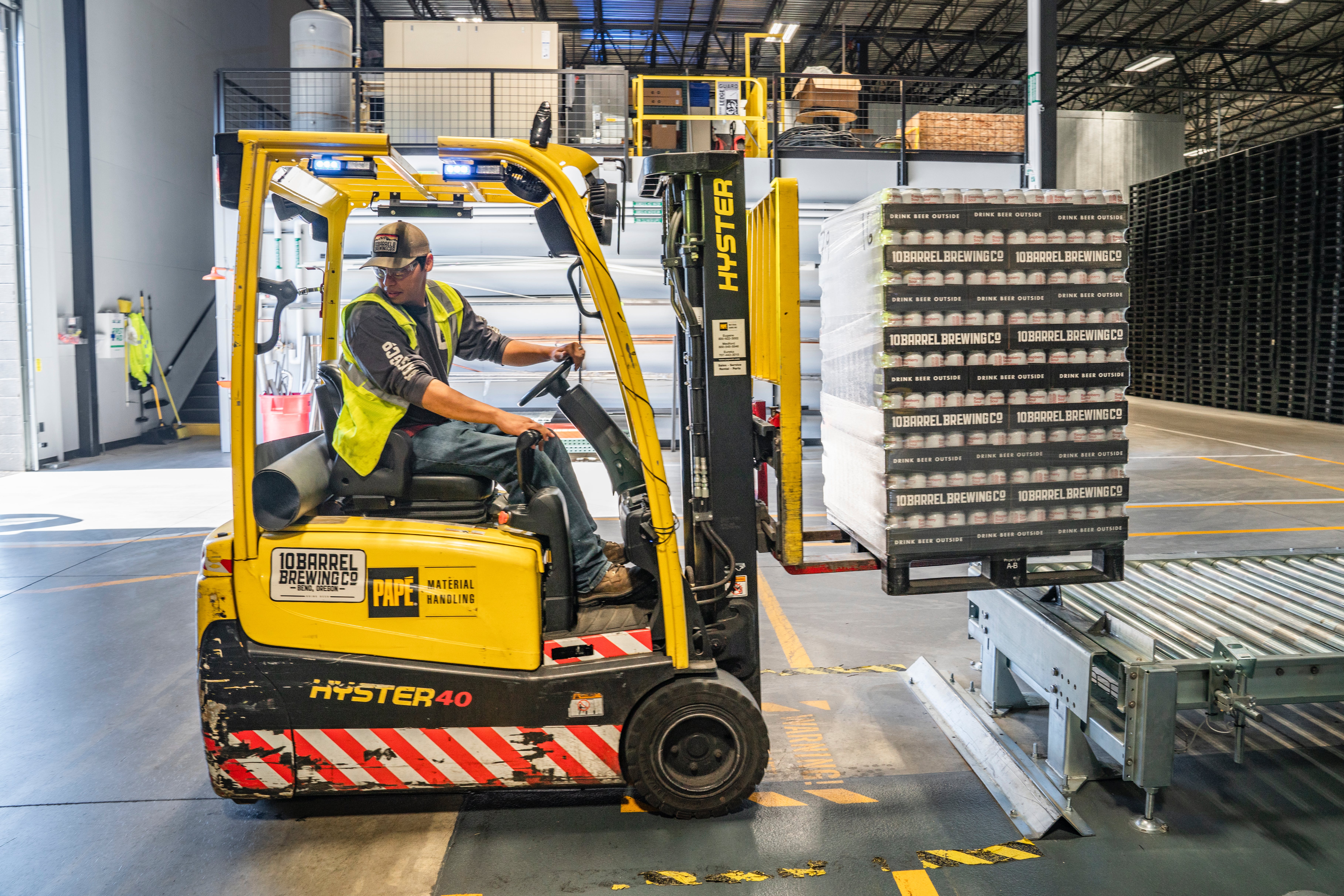Want to Work in Canada? Know Your Work Permit Options
Discover key insights into Canadian Work Permits. Ideal for foreign nationals, it covers types, conditions, and compliance for a successful Canadian career.

Types of Canadian Work Permits
-
Employer-specific Work Permit: This permit allows you to work in Canada according to the conditions on your permit, such as the employer's name, work duration, and work location. This type of permit is usually associated with occupations in fields where there is a shortage of Canadian workers or specific skill sets.
Examples include jobs in healthcare, such as nurses and doctors; skilled trades like electricians and plumbers; and specialized positions in tech companies or engineering firms. Employers in these fields often need to demonstrate that they couldn't find a suitable Canadian candidate before hiring from abroad.
For an Employer-specific Work Permit, applicants typically need relevant educational qualifications, like a degree or diploma in a field related to the job. Work experience in the field is usually a requirement, and proficiency in English or French is essential, depending on the job location.
- Labour Market Impact Assessment (LMIA) Based Work Permits: This is a common route for employer-specific work permits. Canadian employers must obtain an LMIA, proving that no suitable Canadian candidate is available for the job. This process involves advertising the position and demonstrating the necessity of hiring a foreign worker.
- LMIA Based Work Permits also require specific educational credentials, varied work experience depending on the job role, and essential language proficiency.
- Temporary Foreign Worker Program (TFWP): This program includes different streams for high and low-wage positions, agricultural workers, and caregivers. Employers must obtain an LMIA to hire foreign workers under this program.
- Specific streams under TFWP cater to industries like agriculture, where there are often labor shortages.
- Under the TFWP, educational qualifications range from none for certain low-wage positions to advanced degrees for high-wage positions, with relevant work experience varying based on the stream. Language proficiency might be basic for low-wage roles and higher for skilled positions.
- Global Talent Stream: Part of the TFWP, this stream allows Canadian employers to fast-track the hiring of foreign workers in highly skilled positions, particularly in the tech sector, to address labor shortages in these areas.
- This Stream demands advanced degrees or significant expertise in fields like technology, extensive experience in specialized roles, and high proficiency in English or French.
- Academic Positions: Universities and other educational institutions often sponsor foreign academics under employer-specific work permits. These positions usually require a high level of expertise and specialization.
- This work permit typically requires a PhD or equivalent in the relevant field, significant academic and research experience, and high language proficiency in English or French, depending on the institution.
- Intra-Company Transfers: Multinational companies can transfer employees to their Canadian branches under this stream. It's designed for employees at managerial or specialized knowledge levels.
- ICT work permit needs a degree relevant to the role, at least one year of employment in a managerial or specialized knowledge role with the company, and language proficiency depending on the role and location in Canada.
- Labour Market Impact Assessment (LMIA) Based Work Permits: This is a common route for employer-specific work permits. Canadian employers must obtain an LMIA, proving that no suitable Canadian candidate is available for the job. This process involves advertising the position and demonstrating the necessity of hiring a foreign worker.
-
Open Work Permit: This permit allows you to work for any employer in Canada, except for those who have failed to comply with conditions or those offering services like striptease, erotic dance, escort services, or erotic massages.
Beneficial for those looking for flexibility, open work permits are popular among international students and spouses of skilled workers. This permit is common in sectors like hospitality, retail, and general labor positions where there isn’t a specific employer requirement.
- Post-Graduation Work Permit (PGWP): This permit allows international students who have completed their studies in Canada to stay and work in the country for up to three years, depending on the length of their study program. The PGWP is open, meaning graduates can work for any employer.
- Post-graduation work permits require the completion of a program of study at a Canadian institution, with no specific work experience or language proficiency requirements.
- International Experience Canada (IEC): This program is targeted at young adults (usually between 18 and 35 years old) and includes three streams: Working Holiday, Young Professionals, and International Co-op. It allows participants from certain countries to work in Canada, usually for up to two years.
- The International Experience Canada program's eligibility varies with the stream; some work experience may be needed for the Young Professionals stream, and basic to moderate language proficiency is advisable.
- Spousal Open Work Permit: Spouses or common-law partners of temporary foreign workers or students in Canada can apply for an open work permit, allowing them to work for any employer.
- Spousal Open Work Permits do not require specific educational qualifications or work experience, and language proficiency, while beneficial, is not mandatory.
- Bridging Open Work Permit (BOWP): This permit is available for individuals who have applied for permanent residency in Canada and are awaiting a decision. It allows them to continue working in Canada while their application is processed.
- Bridging Open Work Permits depend on the qualifications for the permanent residency application in terms of educational qualifications, work experience, and language proficiency.
- Post-Graduation Work Permit (PGWP): This permit allows international students who have completed their studies in Canada to stay and work in the country for up to three years, depending on the length of their study program. The PGWP is open, meaning graduates can work for any employer.
-
Other Categories: There are specific permits for refugees and under certain humanitarian programs.
- Refugees and Protected Persons: Individuals who are awaiting the determination of their refugee claim or have been recognized as protected persons can obtain an open work permit.
- Humanitarian and Compassionate Grounds: In some cases, individuals in Canada on humanitarian or compassionate grounds may be eligible for an open work permit.
- For Refugees, Protected Persons, and Humanitarian Grounds, there are no specific requirements for educational qualifications, work experience, or language proficiency, but having these can be beneficial for integration and employment.
Application Process
Applying for a Canadian work permit involves a detailed process, varying slightly depending on the permit type:- Determine Eligibility: Assess if you meet the criteria for the specific work permit, including educational qualifications, work experience, and language skills.
- Gather Documentation: Prepare necessary documents, such as job offers, proof of qualifications, and identity documents.
- Complete Application: Fill out the relevant forms and submit them along with the required documents.
- Pay Fees and Await Processing: Application fees vary, and processing times depend on the permit type and applicant's country.
- Medical Exams and Biometrics: Some permits require medical exams and biometric data collection.
Renewal and Extension
Renewing or extending a work permit involves:- Check Eligibility: Ensure you meet the criteria for renewal or extension, considering any changes in circumstances.
- Submit Application Before Expiry: Apply before your current permit expires to maintain legal status in Canada.
- Understand Limits: Be aware of any restrictions on the number of renewals or extensions for your permit type.
Conditions and Restrictions
- Employer-specific Restrictions: If your work permit is tied to a specific employer, you must work for that employer only, in the specified location and role.
For example, a software engineer from abroad hired by a Canadian tech firm cannot work for another employer or in a different role than what is specified on their work permit. If the worker wishes to change employers or roles, they must apply for a new work permit, which involves reassessing their eligibility and the labor market needs.
- Duration and Renewal: Work permits are typically issued for a limited time and must be renewed or changed under a separate application process.
For instance, a seasonal agricultural worker may receive a permit for the duration of the harvesting season. Renewing or changing a work permit requires the holder to go through a new application process, where they must again prove their eligibility and the need for their skills in Canada.
- Occupational Restrictions: Some open work permits may have restrictions based on the province of destination or specific occupations. For example, a caregiver may be restricted to working only within that profession, and a provincial nominee might be limited to working in the province that nominated them.
- Health and Safety: Work permit holders must leave Canada at the end of their authorized stay and are prohibited from working in businesses with a risk of sexual exploitation, such as strip clubs or massage parlours.
- Medical Conditions: Depending on the medical examination results, certain occupational restrictions might be imposed. For instance, restrictions may include not working in child care, primary or secondary school teaching, health services field occupations, or agricultural occupations, depending on whether the applicant is from a designated or non-designated country.
- General Compliance: All work permit holders must comply with Canadian labor laws, including workplace safety and minimum wage requirements. For example, a foreign worker is entitled to the same workplace protections as Canadian workers, such as safe working conditions and fair pay.
Impact of COVID-19
The pandemic has brought changes and challenges, including travel restrictions and additional health screenings. It is important to stay updated on these changes.Conclusion
Understanding the types of work permits and adhering to their specific conditions and restrictions is crucial for successful employment in Canada. Staying informed and seeking professional advice when necessary can significantly aid in navigating the Canadian work landscape. Want to apply for a work permit? Find the right program and start an application here. Follow us on social media for more exciting updates coming your way.


